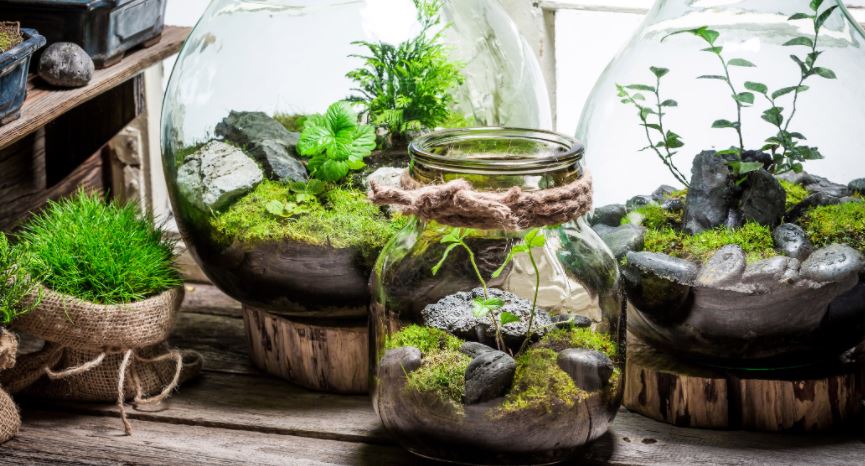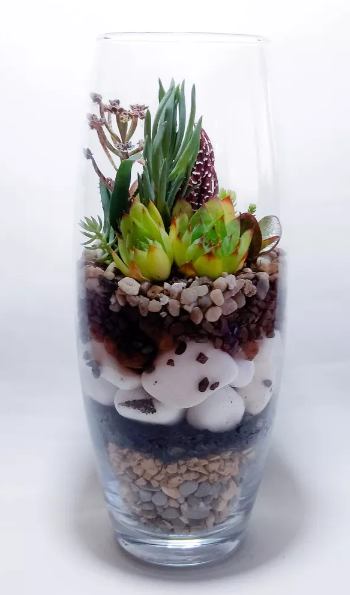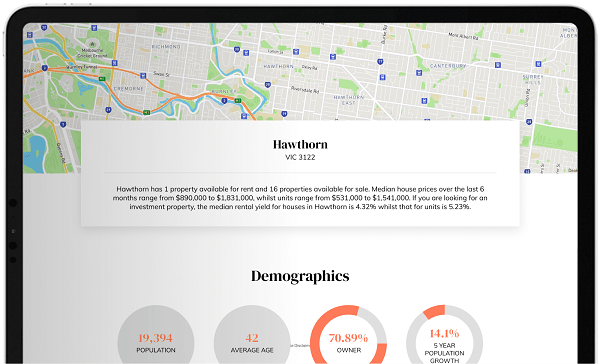
Creating Your Own Terrarium Indoor Garden
What is a Terrarium?
A terrarium is a grouping of little, decorative plants that grow in a sealed container. These containers are typically made from glass and can be jars or wherever your imagination leads you. The appeal of glass is that it is transparent and you can see the whole landscape of the plants as they grow within their own eco-system. The plants and the soil in the terrarium release water vapour – essentially recycling water. Terrariums are self-nourishing, which is why they require little maintenance if sealed.
Supplies you need for your Terrarium

- Glass containers with or without tops. You’ll need some sort of glass vessel to create your terrarium. There are plenty of unique containers from which to choose. Just make sure that the vessel is made of a transparent material so you can enjoy your mini-garden.
- Gravel, pebbles, sea glass or beach stones. Small stones or pebbles will be used as the base of your terrarium. The small pebbles act as water drainage for the plants’ roots to ensure that excess water doesn’t stay in the soil and cause rot.
- Activated charcoal (found at a nursery or pet supply store). You won’t need much; a thin layer of activated charcoal keeps water fresh and helps to fight off bacterial growth in your terrarium.
- Terrarium plants. It wouldn’t be a terrarium without the greenery. Pick out a few of your favourite pint-sized plants to use in your terrarium. Air plants, succulents and mini-cacti are all viable options. See our complete list of recommended terrarium plants below.
- Sterile potting mix. Potting soil will act as an important layer for your DIY terrarium. Any type of soil should do the trick, although there are special mixes available if you’re planting cacti or succulents.
- Optional: Moss, decorative elements.
Best Terrarium Plants
There are multiple plants you can choose to grow in your Terrarium. The 2 major factors to consider when choosing your plants are they need to be small and thrive in a humid environment. Although succulents and cacti aren’t humidity’s biggest fans, you can compensate by using a glass container with a slight opening
Five Terrarium Plant suggestions.
- Air plant Tillandsia stricta
- Assorted succulents and cacti from Bunnings
- Maidenhair fern Adiantum raddianum
- Starfish plant Cypthathus bivittatus
- Starfish Flower Cactus prefers humidity
How to build your Terrarium
Once you have found your container or containers you will need to set the foundations to help sustain and promote plant growth. Drainage is essential to having a healthy Terrarium. So, using our image as a rough guide –
- Fill the bottom quarter of your container with the small pebbles.
- Add about 1cm of charcoal. This absorbs any excess water.
- You can add some larger stones if you want.
- Pour in about 3cm of the potting soil.
- Add your plants
There are a number of ways you can create your terrarium. They are a few techniques that work effectively. Pick what best suits you. Go to YouTube and you can many examples of creating a terrarium.
How to maintain your Terrarium
- Be sure to lightly water the base every two weeks or once the soil looks like it has dried out.
- You should also display your terrarium in an area that receives a lot of bright, indirect sunlight.
- Succulents are sensitive to temperature change – many will actually bloom in a cool, dry period.
- The plants’ growth is in spring and summer so water if the soil is dry.
- In autumn and winter water if necessary but don’t overdo it.
- Use a light, gentle formula once a month to fertilise.
- Keep the inside environment of your container as clean as possible. Only wipe with natural ingredients.


